Sociable Weaver
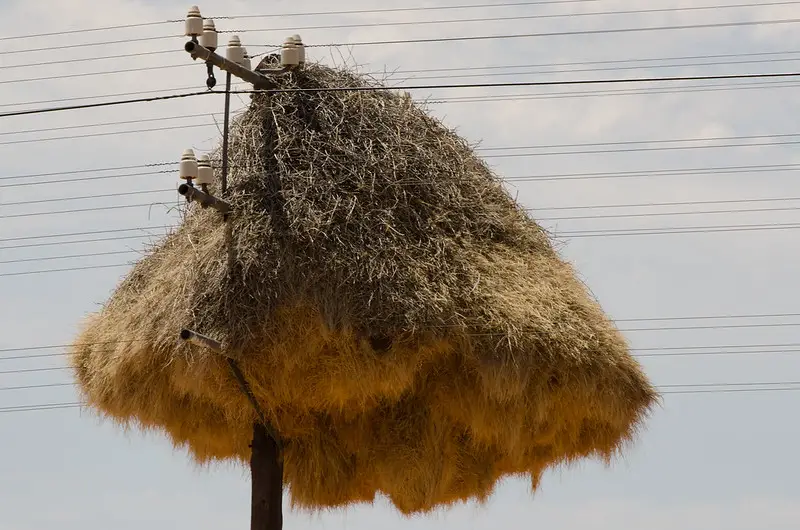
You won’t believe the size of these bird condos! Sociable weavers construct massive communal nests that can house over 100 pairs of birds. These feathered architects create structures so large they can break tree branches! The nests are primarily built on sturdy structures like acacia trees or telephone poles, and can span up to 20 feet in length and 10 feet in width. These avian high-rises are so impressive, they’ve even become tourist attractions in parts of Africa. The largest nests can weigh up to 2,000 pounds – that’s heavier than a grand piano! According to research published in the journal Animal Behaviour, some nests have been continuously occupied for over 100 years, making them the longest-lasting bird structures in the world.
With separate chambers for different temperatures, these nests are the ultimate in bird luxury. The central chambers maintain warmth during cold nights, while outer rooms provide cool shelter from the scorching daytime heat. These remarkable nests even host other bird species as tenants, creating a diverse avian community. Aggressive sociable weavers push lazy birds to build, ensuring the nest’s continuous growth and maintenance. These birds can live for nearly 10 years in the wild and don’t start breeding until they are two years old. They drink almost no water and live mostly on seeds and little desert food. The complex social structure within these nests is fascinating, with birds working together to maintain and expand their shared home year after year.
Bald Eagle
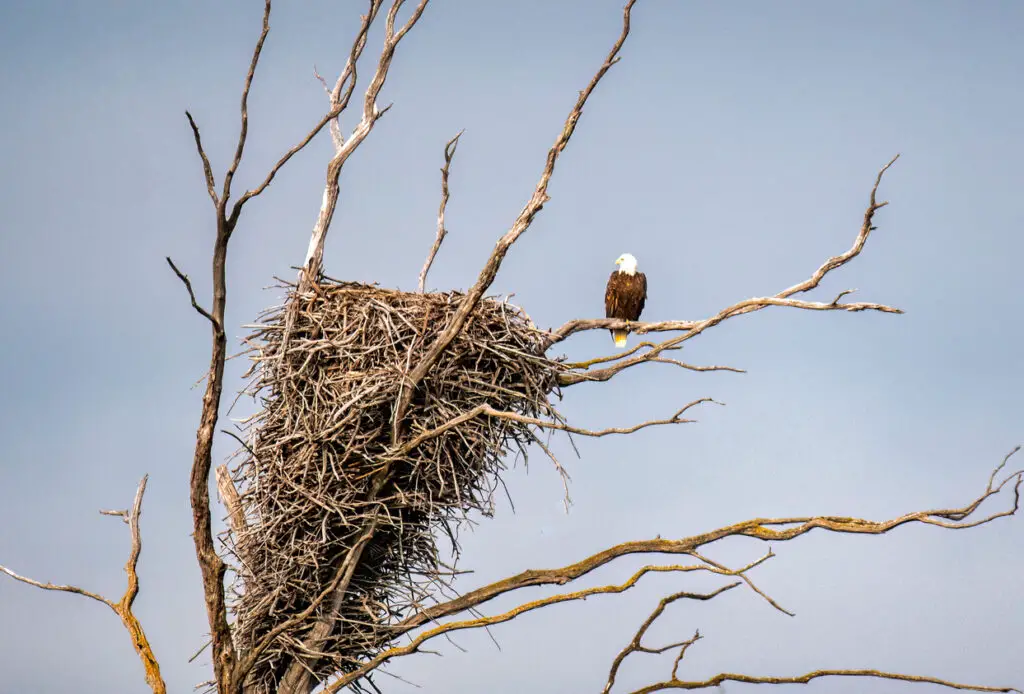
America’s national bird builds nests fit for royalty! Bald eagles construct the largest nests of any living bird, with some reaching truly monumental proportions. These massive structures are typically built high up in tall, sturdy trees with a good view of the surrounding area. The largest recorded eagle nest was found in St. Petersburg, Florida, weighing almost 2 tons and measuring 9.5 feet wide and 20 feet deep! That’s bigger than some studio apartments in New York City. These avian power couples often return to the same nest year after year, adding to it until it becomes a true natural wonder. The nests are primarily constructed of interwoven sticks and lined with softer materials like grass, moss, and feathers.
dedication to creating the perfect home. Bald eagles typically reuse the same nest each season, adding to it and making it larger over time. Some nests have been known to reach depths of 20 feet and weigh up to two tons. Nests are made of sticks and contain grass, pine needles, and sometimes pieces of cornstalks. Eagles add to their nests each year, and after many years of successful nest building, their homes may grow to around 10 feet in diameter, 12 feet deep, with a weight of up to 2 tons. This continuous expansion can sometimes lead to nest collapses, forcing the eagles to start anew – a testament to the ongoing cycle of construction in the eagle world.
Montezuma Oropendola
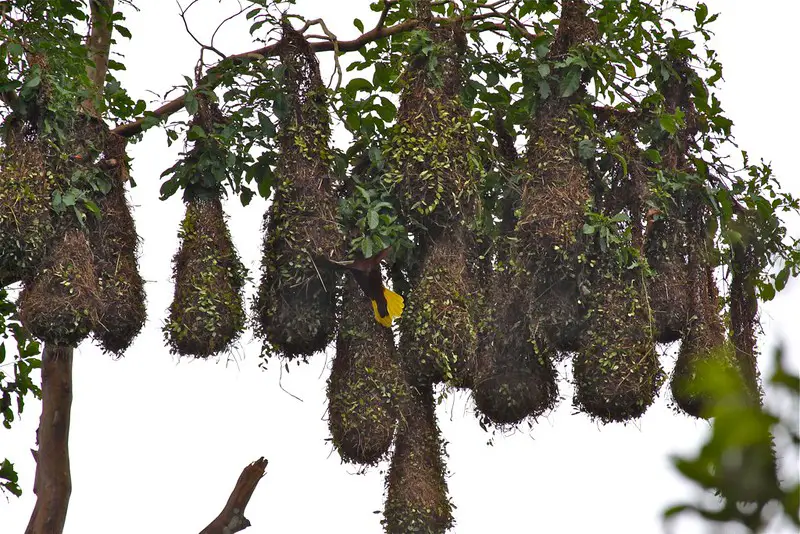
Imagine bird nests that look like designer handbags! Montezuma oropendolas create stunning woven nests that dangle from tree branches like nature’s own fashion accessories. These nests are intricately woven from fibers, vines, and other plant materials, creating a tear-drop shape that can sway gently in the breeze. But wait until you hear about their size – these avian Gucci bags can measure up to 6 feet long! That’s taller than most humans! And the best part? These birds build entire colonies of up to 150 nests dangling from a single tree, creating a spectacle that looks like a high-end boutique in the middle of the jungle.
Talk about exclusive real estate – only one dominant male gets to mate with most females in the colony. These birds are so smart, they often build near wasp nests for added protection. It’s like having a built-in security system! The nests are typically constructed on the eastern side of trees to shield them from strong winds. Abandoned nests are sometimes repurposed by other birds or even small mammals, showcasing the lasting impact of these avian architects. The complex social structure of oropendola colonies, with their hierarchies and collective nest-building, offers a fascinating glimpse into avian society. It can take up to 12 days for an oropendola to weave its nest, with one Baltimore Oriole observed spending 40 hours building a nest with about 10,000 stitches and thousands of knots, all with its beak.
Edible-nest Swiftlet
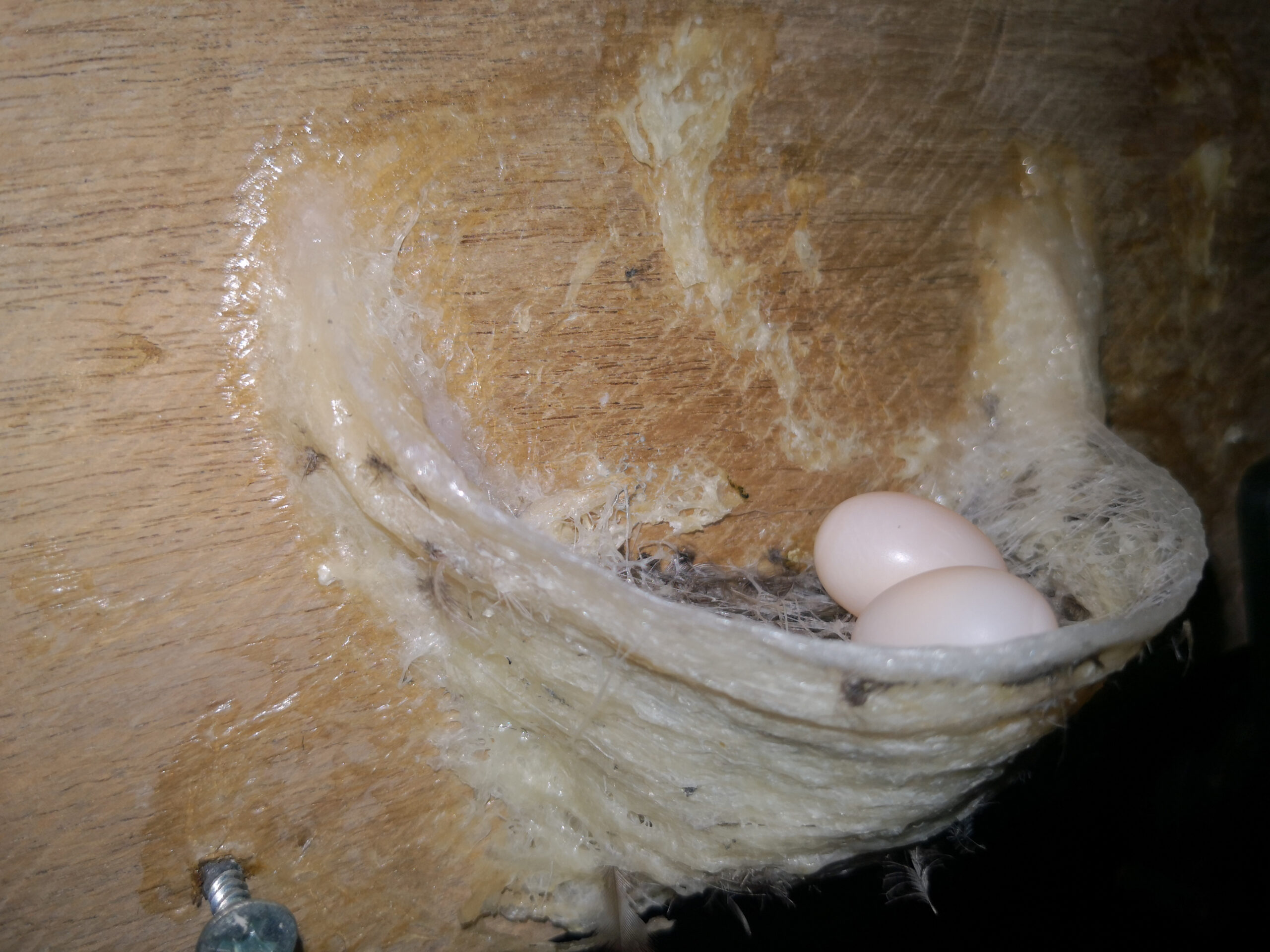
Would you eat a bird’s nest? In some parts of Asia, people pay top dollar for these unique creations! Edible-nest swiftlets build their nests entirely from their own saliva, creating translucent, cup-shaped marvels. These small birds produce strands of sticky saliva from glands under their tongues, which harden into a cement-like substance when exposed to air. These nests are so valuable that they can sell for up to $3,000 per pound for use in bird’s nest soup, a delicacy believed to have health benefits such as improving skin complexion and boosting the immune system.
It takes over 30 days for a swiftlet to build a single nest, making these tiny architects true masters of patience. The nests are typically built in caves or on cliff faces, but some swiftlets have adapted to nesting in specially designed buildings, creating a unique form of bird-human cohabitation. This has led to the development of swiftlet farming, where buildings are designed to mimic cave environments to attract nesting swiftlets. The industry surrounding these nests is worth millions, highlighting the unexpected intersection of avian architecture and human cuisine. Rich in nutrients like calcium, iron, potassium, and magnesium, these nests have been prized in Chinese cuisine for centuries.
Hamerkop
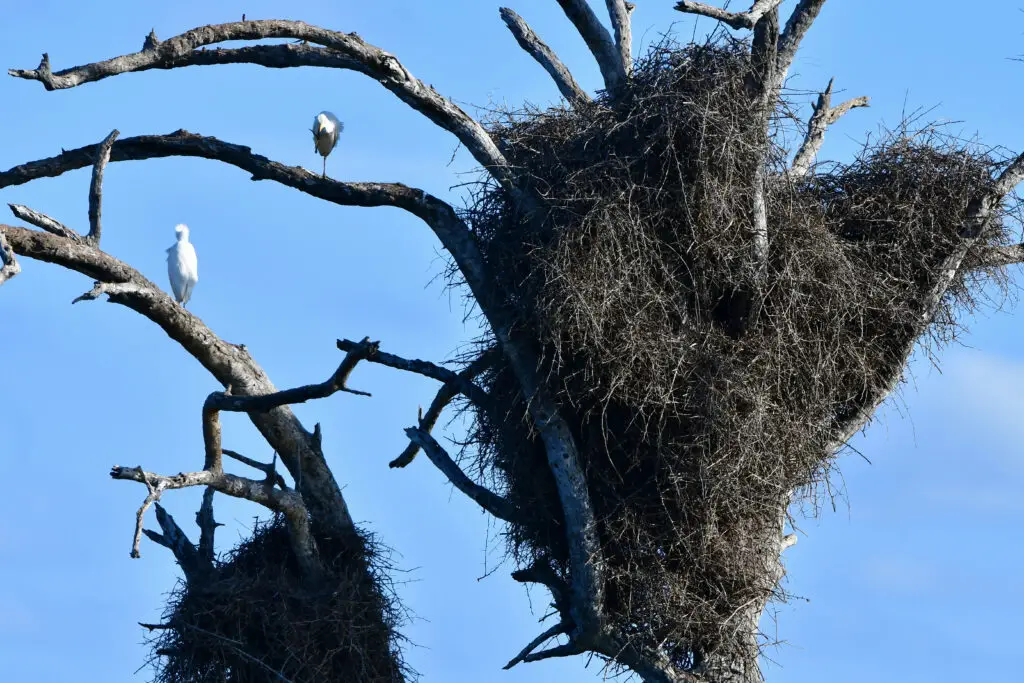
These birds don’t just build nests; they construct castles! Hamerkops create enormous structures that can support the weight of a full-grown man. Talk about overengineering! These impressive nests are typically built in the forks of trees, but can also be found on cliffs, walls, or even human-made structures. Using over 10,000 sticks, these industrious birds build nests measuring up to 5 feet across and 3 feet deep. As if that weren’t impressive enough, they decorate their fortresses with colorful objects like cloth, plastic, and even bones, and line them with mud for insulation and waterproofing.
These avian workaholics can build up to 4 nests a year, even when they’re not breeding. It’s like they’re running their own construction company! The nests are so sturdy that they’re often used by other animals, including snakes, genets, and even small eagles, turning them into multi-species apartment complexes. Hamerkop nests can weigh up to 50kg and consist of thousands of pieces of material. This excessive building behavior has puzzled scientists, leading to various theories about its evolutionary purpose, from signaling fitness to potential mates to serving as decoy nests to confuse predators. The hamerkop’s reputation for nest-building is so impressive that it has led to myths about these birds being shapeshifters or having magical powers.
Penduline Tit
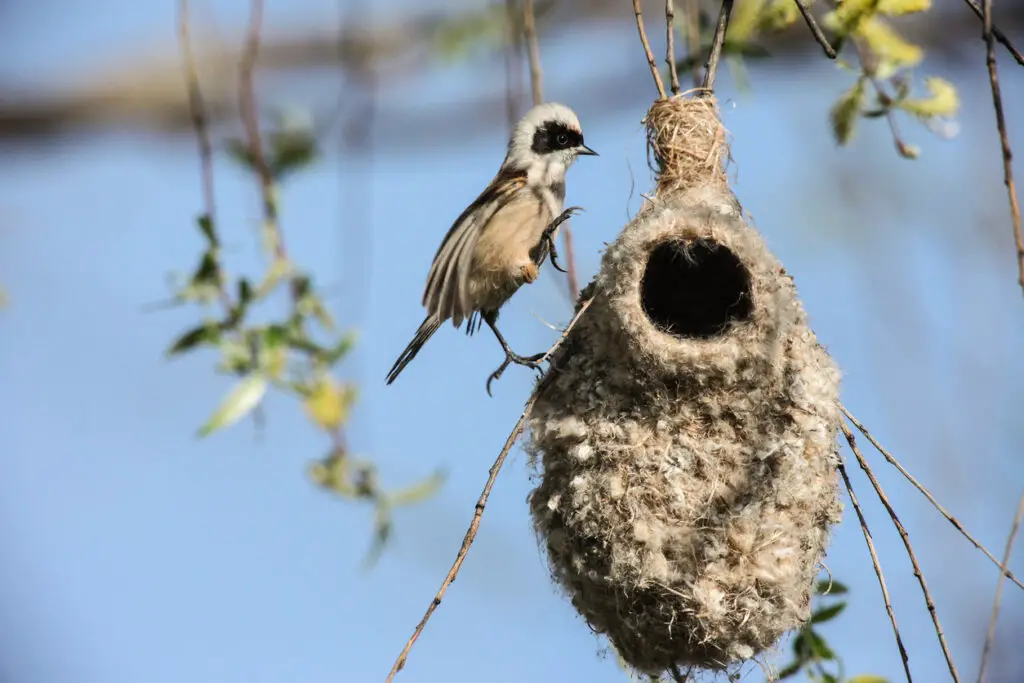
These tiny birds create nests so intricate, they’ve been used as purses and shoes! Penduline tits weave elaborate, pouch-shaped nests that hang from tree branches like natural works of art. Using plant fibers and fluffy seeds, these avian artisans create nests so strong that some cultures have repurposed them as accessories. In Kenya, Masai people have used them as coin purses, while in Eastern Europe, they’ve been turned into children’s shoes. Talk about sustainable fashion!
According to research published in the Journal of Ornithology, the nests are typically built by the male bird, who uses his beak to weave plant fibers into a tight, felted structure. The entrance to the nest is often hidden, with a small tunnel leading to the nesting chamber. This clever design helps protect the eggs and chicks from predators and harsh weather conditions. Some species even create false entrances to confuse potential intruders. It can take up to 20 days for a pair to complete their masterpiece, showcasing the incredible patience and skill of these tiny architects.
Ovenbird
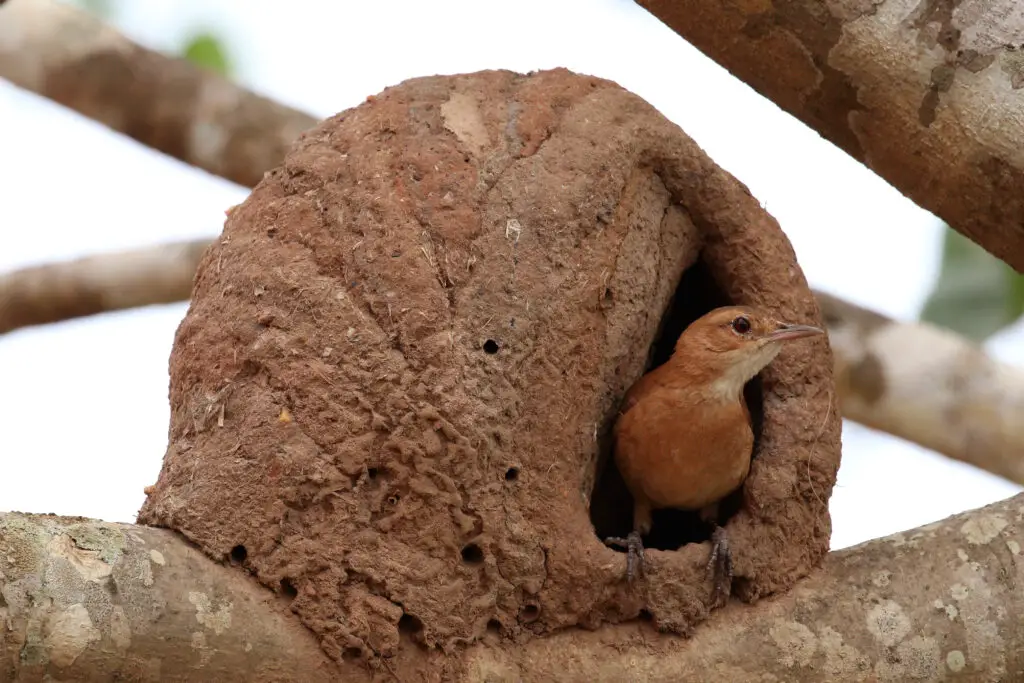
Who needs a kiln when you’re an ovenbird? These South American birds construct nests that look like miniature clay ovens, giving them their unique name. Building their dome-shaped homes from mud, ovenbirds can take months to perfect their creation. The nests are incredibly sturdy and can last for years, even withstanding tropical rainstorms. Some birds even stack new nests on top of old ones, creating avian apartment buildings!
A study in the journal The Auk reveals that the nests typically have two chambers: an outer chamber that serves as a decoy to fool predators, and an inner chamber where the eggs are laid. This clever design provides extra protection for the vulnerable chicks. The national bird of Argentina, these feathered potters showcase the ultimate in natural craftsmanship. Ovenbirds take nearly six weeks to prepare these earthen pot-like nests, meticulously molding and shaping the mud with their beaks and feet. They’ve even adapted to urban environments, sometimes building their nests on human-made structures.
Gila Woodpecker
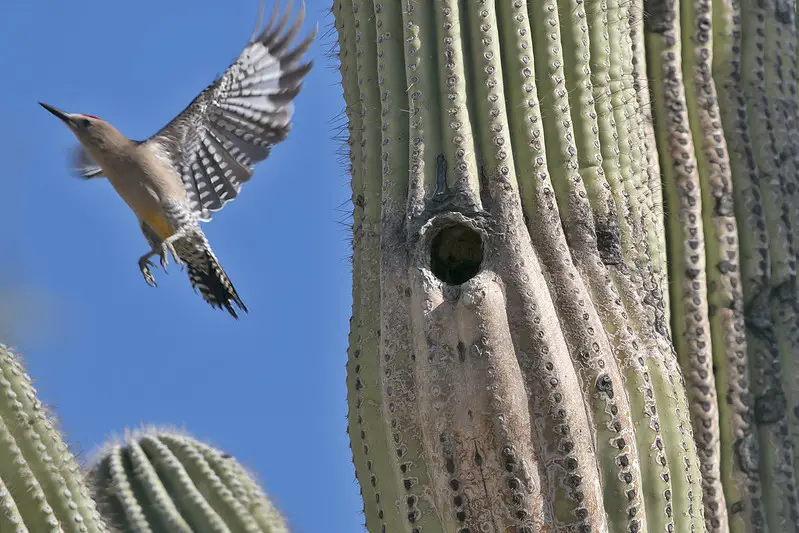
Desert living has never looked so cool! Gila woodpeckers carve out their homes in giant saguaro cacti, creating unique living spaces in the harsh Sonoran Desert. These resourceful birds peck through the cactus skin and burrow downwards, creating a cozy nest protected by the cactus’s natural defenses. The cactus forms a hard shell around the cavity, which Native Americans once used as water containers. Talk about eco-friendly architecture!
Research published in The Condor shows that the woodpeckers typically create a new nest each year, leaving their old homes for other desert dwellers like elf owls, flycatchers, and even bats. This creates a unique ecosystem within the cactus, with multiple species benefiting from the woodpecker’s handiwork. The nesting cavities can be up to a foot deep and take up to a month to excavate. Interestingly, the saguaro cactus produces a resin that hardens the inner walls of the cavity, preventing water loss and providing extra insulation for the nesting birds.
European Bee-eater
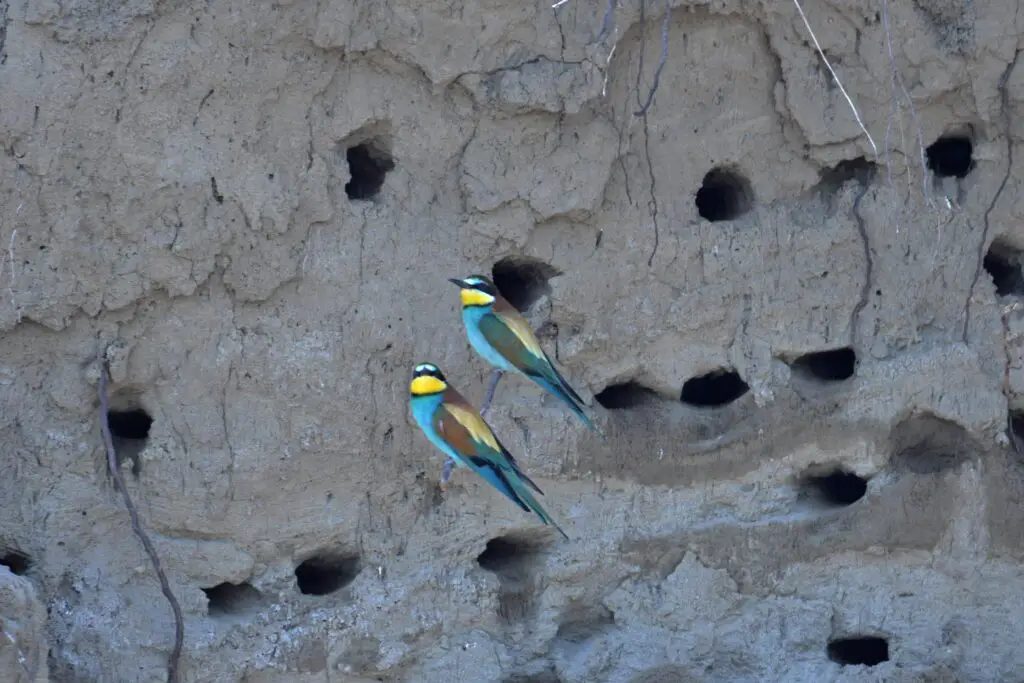
These colorful birds are nature’s own mining engineers! European bee-eaters excavate long tunnels in sandy riverbanks to create their hidden nests. Using their bills and feet, these industrious birds can dig tunnels up to 3 feet long, with a nesting chamber at the end. They’re so family-oriented that unsuccessful breeders often help their relatives raise chicks. It’s like having live-in babysitters!
A study in the Journal of Avian Biology found that the tunnels are typically slightly angled upwards to prevent rainwater from flooding the nesting chamber. At the end of the tunnel, the birds create a wider chamber where they lay their eggs on the bare sand. This unique nesting strategy provides excellent protection from predators and harsh weather conditions. Bee-eaters are known to nest in large colonies, sometimes with hundreds of pairs in a single bank. The birds often return to the same nesting sites year after year, expanding their tunnel networks and creating intricate underground cities.
Common Tailorbird
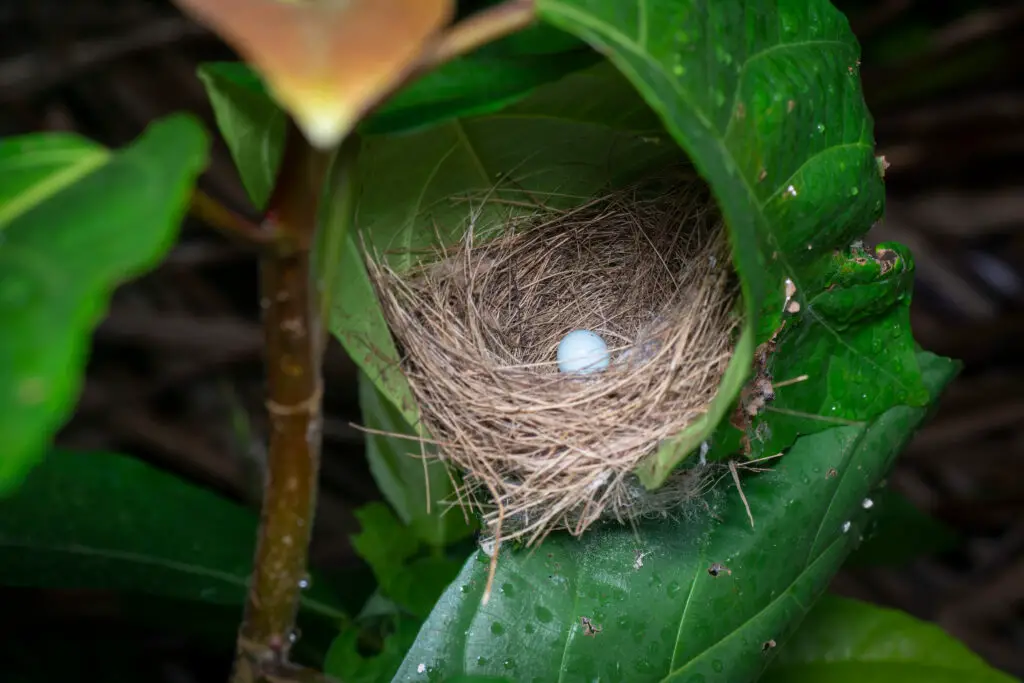
These tiny birds give new meaning to the term “tailor-made”! Common tailorbirds literally sew leaves together to create their nests, using their beaks as needles and plant fibers as thread. So skilled are these avian seamstresses that they inspired a character in Rudyard Kipling’s “The Jungle Book”. In the late 19th century, a civil servant in India even managed to get tailorbirds to use cotton thread for their needlework. Now that’s what we call a bird-human collaboration!
Research published in the Journal of the Bombay Natural History Society reveals that the birds typically choose large leaves and use their sharp beaks to punch holes along the edges. They then use spider silk, plant fibers, or even stolen thread to sew the leaves together, creating a deep cup-shaped nest. This unique construction provides excellent camouflage, helping to protect the eggs and chicks from predators. The tailorbird’s nest is so well-crafted that it can withstand strong winds and heavy rains. Some tailorbirds have even been observed creating double-layered nests for extra insulation, showcasing their adaptability and ingenuity.Avian Architects: 15 Birds That Build the Most Elaborate Nests You’ll Ever Seen.
Malleefowl
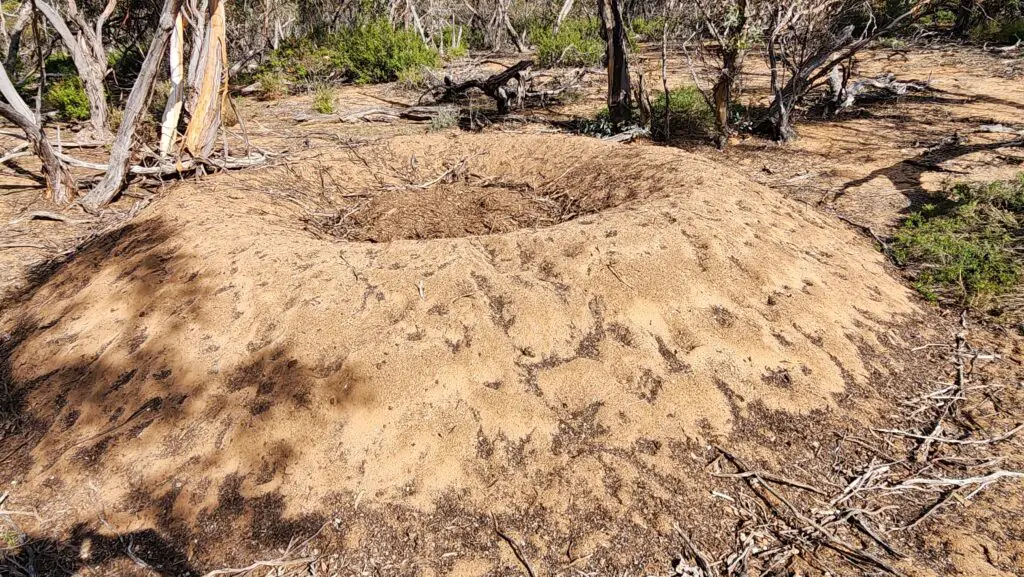
The Malleefowl takes nest-building to a whole new level with its incredible incubation mounds. According to the Australian Wildlife Conservancy, these birds construct enormous nests that can measure up to 35 feet wide and 5 feet high. The male spends months gathering plant material and sand to create a giant compost heap, acting as a living thermostat by constantly monitoring and adjusting the mound’s temperature.
Research published in the journal Emu reveals that the male Malleefowl uses its beak and tongue to check the mound’s temperature, maintaining it at a precise 33°C (91.4°F). If it’s too hot, he removes sand; if it’s too cool, he adds more. Each day, the male spends over five hours transferring about 850 kilograms (1,874 lbs) of soil. This remarkable nesting behavior showcases not just architectural skill, but also dedicated parental care.
Satin Bowerbird
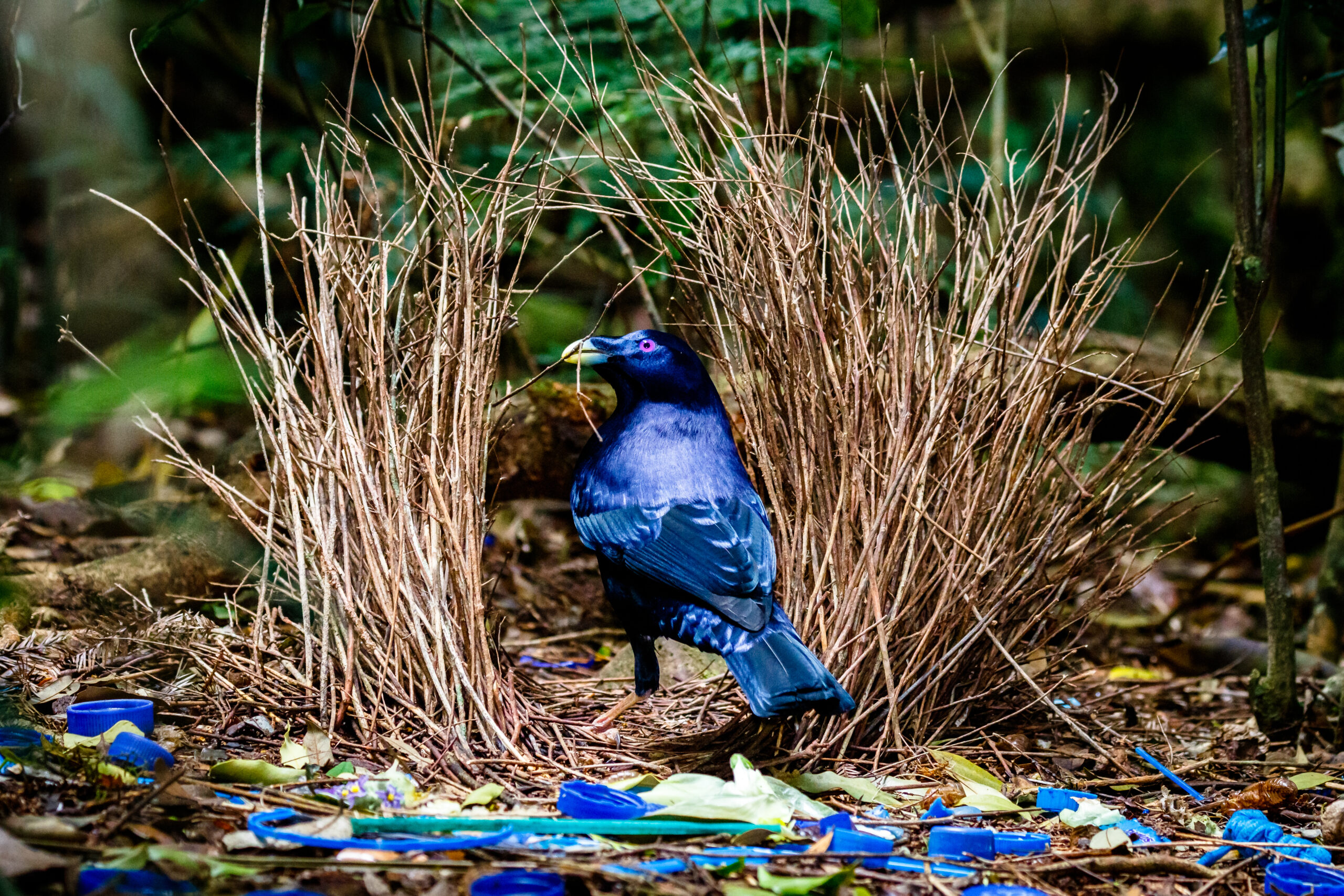
The Satin Bowerbird takes avian interior design to a whole new level. Males of this species build intricate U-shaped structures on the forest floor, known as bowers. According to research in the journal Nature, these bowers are not nests, but rather elaborate display arenas used to attract females. What makes these bowers truly remarkable is the bowerbird’s obsession with the color blue, collecting and arranging blue objects around their bowers – anything from flowers and berries to feathers, and in modern times, even bottle caps and plastic pieces.
A study published in Current Biology found that male Satin Bowerbirds spend up to 70% of their time collecting and arranging these blue objects. The birds have even been observed “painting” the inner walls of their bowers with a mixture of charcoal and saliva, creating a more visually appealing display. This artistic display is all in the name of love, as females choose their mates based on the quality and decoration of their bowers.
Ruby-throated Hummingbird
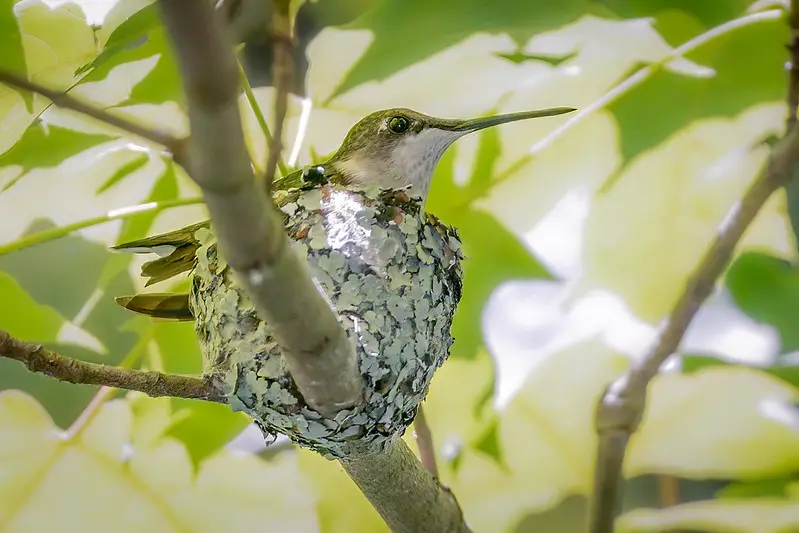
Ruby-throated hummingbirds build tiny, cup-shaped nests typically 1.5 inches (3.8 cm) in diameter and 1 inch (2.5 cm) deep. Females build their nests on a slender, often descending branch, usually of deciduous trees like oak, hornbeam, birch, poplar, or hackberry; sometimes pine. The nests are usually located 10 to 40 feet (3-12 meters) above the ground.
These birds weigh only 2-6 grams (0.07-0.21 oz). The female lays 1-3 eggs (typically 2) that are about the size of a pea, measuring 0.5 inches (13 mm) long. Incubation lasts 11-16 days, and the young fledge after 20-22 days. The nest is made of plant down and spider silk, which allows it to stretch as the chicks grow. The outside is camouflaged with lichen and moss.
Horned Coot
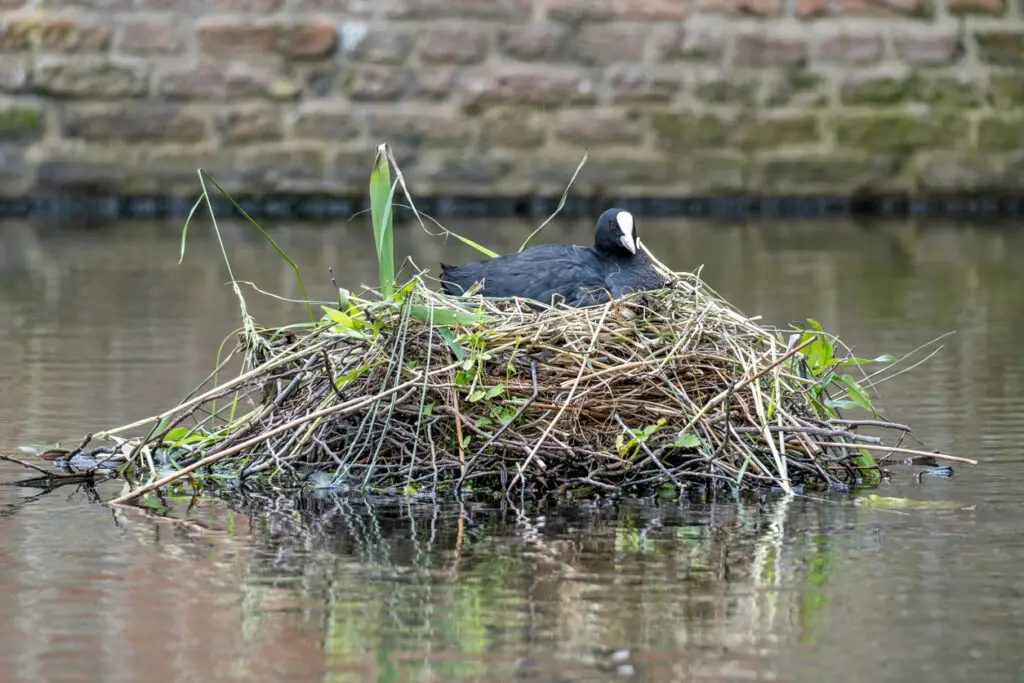
The horned coot builds massive nests in high-altitude lakes of the Andes. These birds are monogamous and sometimes breed in colonies of up to 80 pairs. The huge nest is typically located about 40 metres (131 Feet) from the shore. Horned coots weigh between 1.6-2.29 kg (3.5-5.0 lbs) and measure 46-62 cm (18-24 inches) in length. Their nests are truly remarkable structures. The birds pile pebbles to form an artificial island that can weigh up to 1.5 tons (1,360 kg). This pebble mound is then covered with aquatic vegetation to form the actual nest.
The breeding season is from November to January. The clutch typically consists of 3-4 eggs, which are incubated for about 25-30 days. The chicks are precocial, meaning they can leave the nest soon after hatching. These massive nests not only provide a safe breeding ground but also showcase the incredible engineering capabilities of these birds, adapting to their unique high-altitude lake environments.
Great Bowerbird
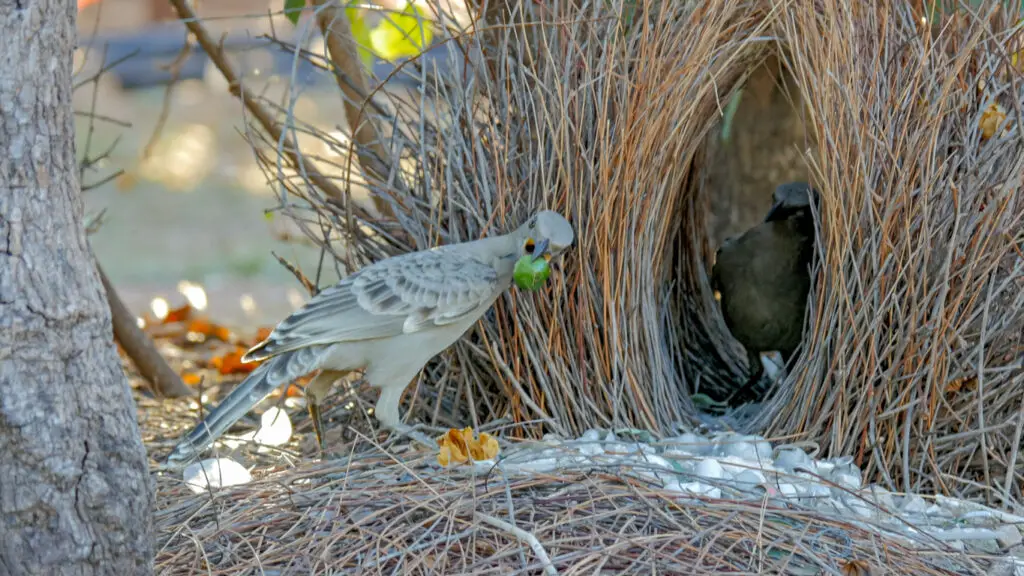
Last but certainly not least, we have the Great Bowerbird, another master of avian architecture. Research published in Current Biology reveals that this Australian bird builds one of the most complex and visually striking bowers of all bowerbird species. The bower consists of two parallel walls of sticks, creating an avenue-like structure that can be up to 5 feet long.
What’s truly impressive is the optical illusion these birds create. A study in the journal Science found that Great Bowerbirds collect small stones, bones, and shells, arranging them in a gradient from largest to smallest as they get further from the bower. When a female stands at the entrance of the bower, this arrangement creates a forced perspective, making the male appear larger than he actually is when he displays in the avenue. This remarkable example of visual trickery showcases the incredible cognitive abilities of these avian architects.
Baya Weaver
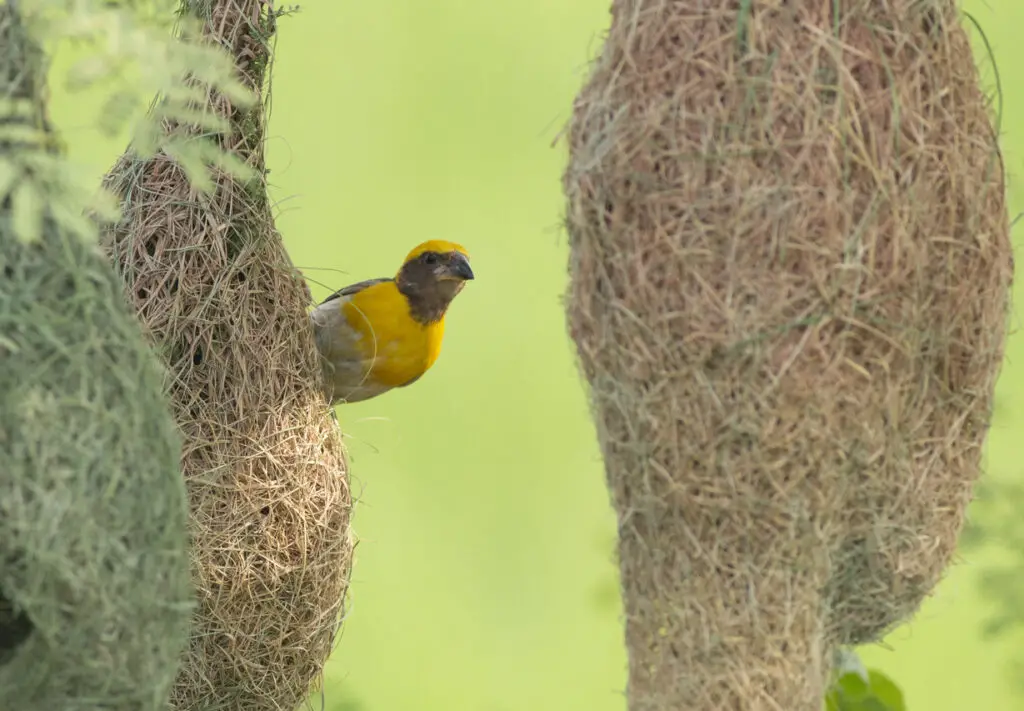
These master craftsmen create some of nature’s most intricate hanging nests. Male Baya weavers construct elaborate pendant-shaped nests using long strips of paddy leaves, thin strips torn from palm fronds, and other plant fibers. The nests hang like tear-drops from branches and feature a long entrance tube that leads to a nesting chamber. To complete a single nest, a male makes up to 500 trips collecting materials and takes about 18 days to complete the structure.
The male Baya weaver’s architectural prowess directly influences his mating success. Each male typically builds multiple nests, carefully weaving thousands of individual knots to create the intricate structure. Females inspect these nests meticulously, testing their strength and construction quality before choosing a mate. The nests are so well-engineered they can withstand strong winds and heavy rains, providing excellent protection for eggs and chicks.
These details showcase the incredible diversity in nesting habits between these two species, from the tiny, delicate nests of hummingbirds to the massive stone structures of horned coots.


